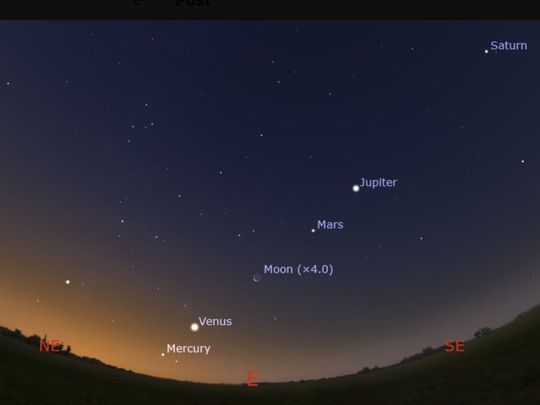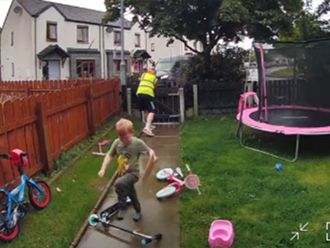
Get ready for an astronomical spectacle as six planets — Mercury, Mars, Jupiter, Saturn, Uranus, and Neptune — will "parade" in the early morning sky on Monday, June 3, and Tuesday, June 4, 2024.
This celestial event offers a rare chance to witness a conjunction of some of the solar system's planets, making it a must-see for astronomy enthusiasts.
The alignment will be visible from overhead to the eastern horizon, in the early morning hours of June 3-4, 2024, at around 5:15 AM local time, according to Thomas Djamaluddin, a researcher at the National Research and Innovation Agency (BRIN) Astronomy and Astrophysics Research Centre.
Though not all planets will be easy to spot, according to Star Walk and Nasa. However, there’s a way out of this, using a free app.
Easiest to observe
Saturn: Visible from late night in Aquarius, shining brightly like a star. The planets will appear as points of light similar to stars, but with a telescope, details like Saturn's rings can be observed.
Mars: Appearing as a reddish point of light in Pisces.
Challenging to spot
Neptune: Also in Pisces, but requires binoculars with good magnification due to its faintness.
Uranus: Will require a telescope to be seen.
At dawn
Uranus, Jupiter, and Mercury: Emerging on the eastern horizon in Taurus. While Jupiter and Mercury may be visible to the naked eye, their proximity to the Sun makes them challenging to observe. Uranus will need binoculars for a clear view.
Nasa said as much, stating that not all the planets would be easy to spot, “as they will be either too close to the rising Sun or too faint to see. But look for reddish Mars between Saturn and the slim crescent Moon,” @NASASolarSystem stated on X.
For an enhanced viewing experience, Star Walk recommends using Sky Tonight — a free astronomy app that helps identify celestial objects and provides detailed information about them.
This alignment is notable because it involves more than three planets, which is relatively rare. Despite its rarity, the alignment will not have any impact on Earth.










_resources1_16a30b3523c_small.jpg)

